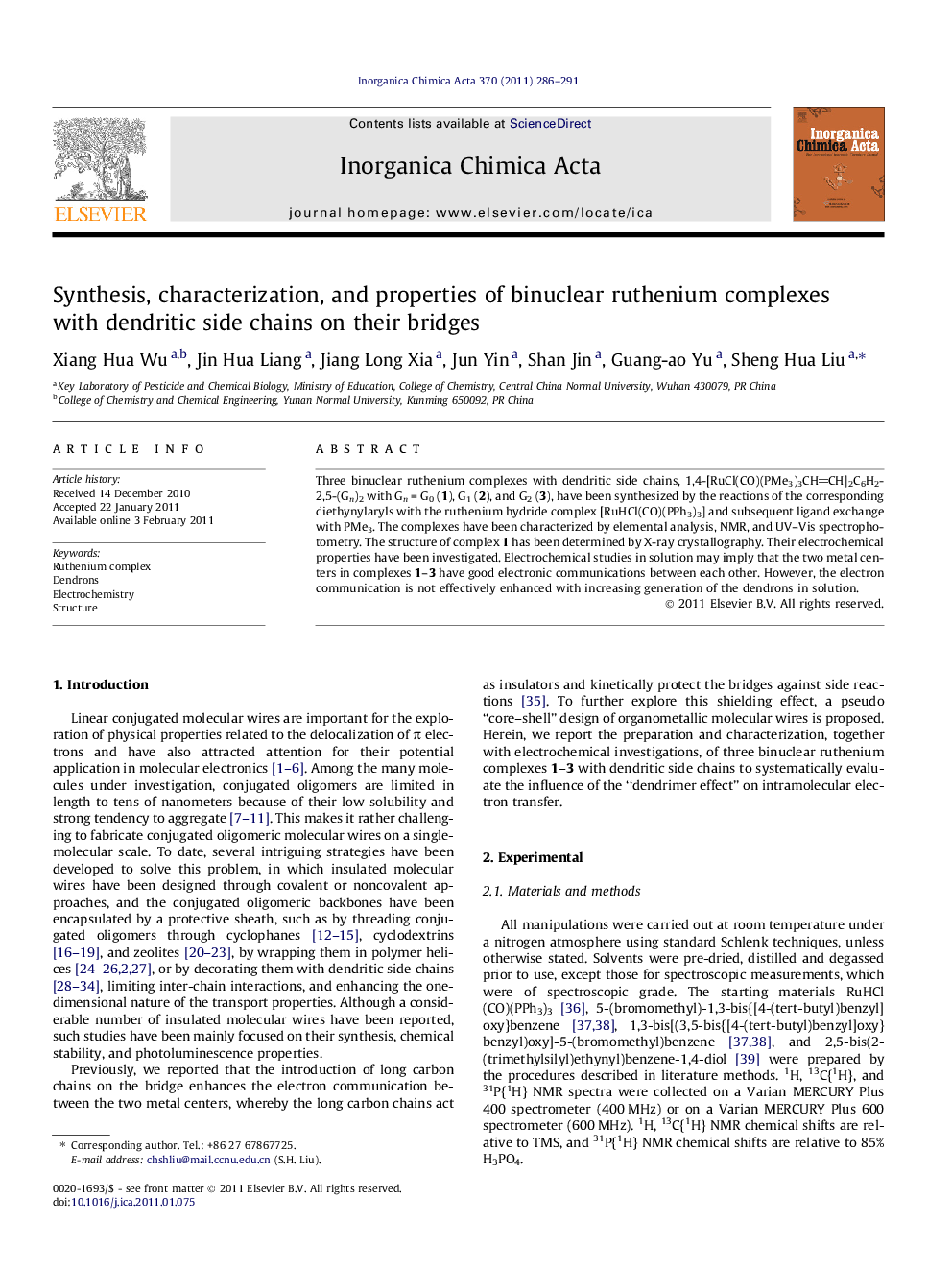| Article ID | Journal | Published Year | Pages | File Type |
|---|---|---|---|---|
| 1306292 | Inorganica Chimica Acta | 2011 | 6 Pages |
Three binuclear ruthenium complexes with dendritic side chains, 1,4-[RuCl(CO)(PMe3)3CHCH]2C6H2-2,5-(Gn)2 with Gn = G0 (1), G1 (2), and G2 (3), have been synthesized by the reactions of the corresponding diethynylaryls with the ruthenium hydride complex [RuHCl(CO)(PPh3)3] and subsequent ligand exchange with PMe3. The complexes have been characterized by elemental analysis, NMR, and UV–Vis spectrophotometry. The structure of complex 1 has been determined by X-ray crystallography. Their electrochemical properties have been investigated. Electrochemical studies in solution may imply that the two metal centers in complexes 1–3 have good electronic communications between each other. However, the electron communication is not effectively enhanced with increasing generation of the dendrons in solution.
Graphical abstractThree “core–shell” designed binuclear ruthenium vinyl complexes 1–3 have been synthesized and characterized. Electrochemical studies in solution may imply that the two metal centers in complexes 1–3 have good electronic communications between each other; however, the electron communication is not effectively enhanced with increasing generation of the dendrons in solution.Figure optionsDownload full-size imageDownload as PowerPoint slideResearch highlights► Three binuclear ruthenium complexes with dendritic side chains, 1,4-[RuCl(CO)(PMe3)3CH=CH]2C6H2-2,5-(Gn)2 with Gn = G0 (1), G1 (2), and G2 (3), have been synthesized. ► The products have been characterized by elemental analysis, NMR, and UV/Vis spectrophotometry. ► Electrochemical studies in solution may imply that the two metal centers in complexes 1–3 have good electronic communications between each other.
